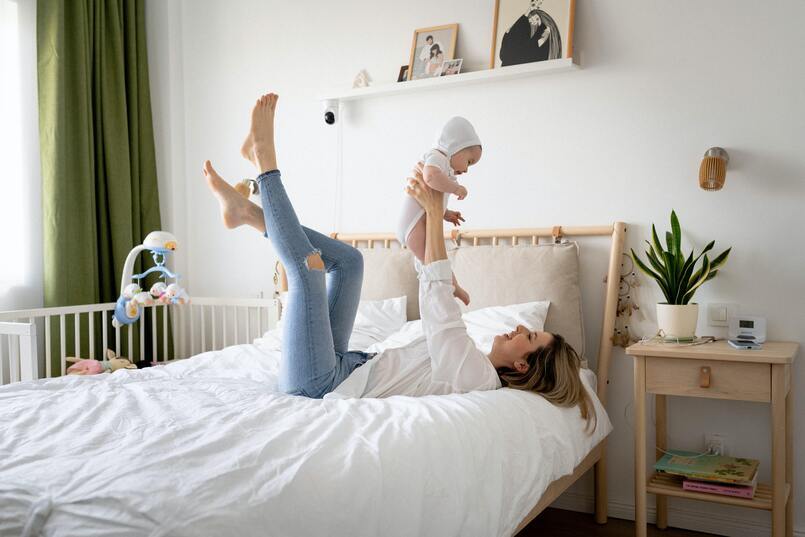
Parental Leave in Canada: What to Know
What is parental leave? How does parental leave work in Canada? The answers to these questions are not always obvious, and it can be difficult to know whether you have gotten all of the information.
This blog is part of a two-part (2) series on parental leave in Canada. Keep reading to learn more about the differences between maternity and parental leave and how to navigate the financial aspects of taking a leave of absence.
What is parental leave in Canada?
Parental Leave in Canada
In Canada, parental leave refers to the right to take a leave of absence to care for a newborn or newly adopted child. During this time, employers are required to hold your job. They cannot dismiss, demote, suspend, or otherwise penalize you for taking time off work.
Employers cannot deny parental leave to those who meet governmental guidelines.
Is Parental Leave the Same as Maternity Leave?
Maternity leave is only available to the birthing parent, meaning it cannot be shared between parents. Parental leave, on the other hand, is available to both parents.
Parental leave can be taken by:
- The birthing parent, following maternity leave
- The other parent
- Both parents
- Adoptive parents
Parental Leave Benefits
Parental leave benefits are federal payments for those on parental leave. They are meant to help parents cover the costs of taking unpaid leave from work. In Canada, parents can choose between standard and extended parental benefits.
Standard Parental Benefits
Standard parental benefits provide up to forty (40) weeks’ leave. While the leave can be shared between parents, one parent cannot receive more than thirty-five (35) weeks of standard benefits. Both parents are eligible for fifty-five percent (55%) of their earnings, up to a maximum of six hundred and fifty dollars ($650.00) CAD per week.
Samantha, for example, is planning on taking time off work to care for her newly adopted child. She is going to share standard parental benefits with her partner. If Samantha takes the maximum, she will be on leave for thirty-five (35) weeks. Samantha’s partner can then apply for up to five (5) weeks of standard parental leave to care for the child.
If Samantha chooses to take fewer weeks of parental benefits, her partner could apply for more.
Extended Parental Benefits
With extended parental benefits, parents can share up to sixty-nine (69) weeks’ leave. However, neither parent can receive more than sixty-one (61) weeks of extended benefits. Both parents are entitled to thirty-three percent (33%) of their earnings, up to a maximum of three hundred and ninety dollars ($390.00) CAD per week.
Adrian, for example, is going to take time off work to care for their newborn child. They will be sharing parental benefits with their partner. If Adrian takes the maximum, they will be on leave for sixty-one (61) weeks. Adrian’s partner can then apply for up to eight (8) weeks’ of extended parental leave to care for the baby.
If Adrian chooses to take fewer weeks of parental benefits, their partner could apply for more.
What should I expect financially?
DO expect to receive federal payments.
You will receive parental benefits so long as you meet governmental guidelines. However, the kind of federal payments you will receive depends on whether you choose to take standard parental leave or extended parental leave.
Standard parental leave
With standard parental leave, parents are entitled to fifty-five percent (55%) of their regular earnings, up to a maximum of six hundred and fifty dollars ($650.00) CAD per week.
Extended parental leave
With extended parental leave, parents are entitled to thirty-three percent (33%) of their regular earnings, up to a maximum of three hundred and ninety dollars ($390.00) CAD per week.
DO NOT expect to receive a top-up from your employer.
Employers are not required to offer an income top-up to supplement parental benefits. Consequently, some offer a top-up, and some do not.
If your employer offers a top-up, be sure to find out:
- How much you will get
- How long it will last
- If you will be required to return to work at a certain time
- If you will be required to remain at your job for a minimum length of time
Is Employment Insurance (EI) the same as parental leave?
Parental leave benefits are sourced from the EI program run by Employment and Social Development Canada. However, parental leave benefits are different from the benefits that Canadians are entitled to should they lose their jobs – these are called EI regular benefits.
To learn more about EI regular benefits, consult Service Canada.
This does not apply to the province of Québec. Residents of Québec access parental leave benefits through the Québec Parental Insurance Plan.
Can I be fired while on maternity leave?
Maternity leave refers to the right to take a leave of absence insomuch as you are pregnant or have recently given birth. In Canada, employees who are pregnant or have recently given birth can take up to fifteen (15) weeks’ leave. During this time, employers are obliged to hold employees’ jobs.
Only if it is impossible to hold employees’ jobs can employers let them go. Employers are limited in this capacity, though. Establishing the legal termination of an employee on maternity leave is a tall order, as employers are expected to make every possible effort to seek out a comparable and alternative role.
To learn more, consult Canadian law firm Samfiru Tumarkin LLP.
Common misconceptions around maternity leave
- There is such a thing as paternity leave
There is no such thing as paternity leave in Canada. There is only maternity leave and parental leave.
- Parental leave is the same as maternity leave
Maternity leave is only available to the birthing parent – the parent who became pregnant and gave birth to the child in question. Parental leave, on the other hand, has nothing to do with birthing. It is all about caring for your newborn. Both parents are eligible for parental leave regardless of whether they were pregnant or gave birth.
- Parental leave and maternity leave do not differ from province to province
The length of maternity and parental leave varies by province and territory.
Maternity Leave
Federally, maternity leave is 15 weeks long. Provincial and territorial governments are prohibited from shortening maternity leave. However, it is within their power to extend maternity leave. For example, maternity leave is 16 weeks long in Alberta. Yet, this does not mean that employees on maternity leave will receive 16 weeks of maternity benefits. Maternity leave benefits are federal payments. Whether provincial or territorial governments allow birthing parents to take more than 15 weeks’ job-protected leave does not change the fact that the federal government only provides 15 weeks of maternity benefits.
Parental Leave
The same rules apply to parental leave. Provincial and territorial governments can make parental leave longer, not shorter. However, longer parental leaves do not mean longer parental benefits.
For more information on how your provincial or territorial government structures maternity and parental leave, consult the list below.

